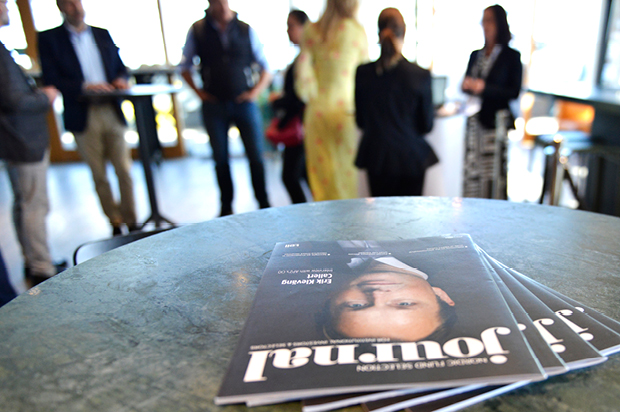
Different approaches to investing in small caps
In February, Tell Media Group, in cooperation with Van Lanschot Kempen Investment Management, Principal – Origin Asset Management and Schroders, invited Finnish selectors and allocators to discuss investing in small cap equities.
The discussion started with Niklas Tell asking the participants about their exposure to small caps and whether now is the time to increase the allocation.
TINO SIEVÄNEN: “We’ve largely stayed away from small caps, which has been a good call. Now the tricky question is whether large caps will continue their run and how much you tactically want to go into small caps. This is probably not the worst time to start building a strategic position in small caps. We added European small caps late last year and we’re currently looking at US small caps.”
ANTTI PAITULA: “The positioning is similar at OP. We’ve increased our exposure to small caps and we see it as an early cycle play. The question is whether this is early or late cycle. The consensus is now for a soft or no landing scenario, so I think there’s a possibility that we’re early cycle and if the Fed is starting to cut rates, that should boost small caps. It’s still, of course, a question whether small caps will be able to outperform the mega caps that have done and continue to do very well.”
JAN WILLEM BERGHUIS: “When we look at companies in our market, we see that a lot of bad news is already priced in. The economy is not in a great shape right now, so there’s a reason why small caps have been depressed. But investors are, of course, looking ahead and if you have a long-term view, then valuations clearly benefit small caps. We see that clients are increasing their allocations and if you expect a soft landing and lower interest rates, then small caps should do well.”
CHRIS CARTER: “If you look at small caps broadly on an index level, it looks positive from a technical point of view and absolute valuations are ok. Relative to large caps, it depends on which region you are looking at. Small caps have done badly relative to large caps in the US but they’ve done well relative to large caps in emerging markets, for example. So small caps in their own right are doing ok – it’s just that US large caps are doing spectacularly well.
LASSI JÄRVINEN: “From a pure valuation perspective, it’s probably not a bad time to go into small caps. Just the fact that interest rates are steadying is positive. However, for small caps to really outperform, you probably need the economy to improve as well.”
JANNE LÄHDESMÄKI: “If we look at historical data, it has always been a good idea to own stocks when central banks starts to cut rates – regardless of how the economy is doing. If we look at the relative performance of Nordic small caps to Nordic large caps, we share a similar challenge to the US. In the US, the large caps have outperformed thanks to the magnificent seven and in the Nordic region, we have Novo Nordisk that has helped the performance of the large cap index.”
TINO SIEVÄNEN: “Many small cap managers say that the change in the rate cycle will be the catalyst for performance. However, if it’s really a duration bet, as an asset allocator I’m probably better off taking that bet in fixed income rather than in small caps. It would be interesting to hear what the managers have to say on that.”
JANNE LÄHDESMÄKI: “From my perspective as a bottom- up stock picker, I don’t really see a big direct impact from interest rates as balance sheets for Nordic small caps are in a good shape. There can, of course, be an indirect impact from increased inflows to small caps when interest rates come down.”
CHRIS CARTER: “I’m not convinced that interest rates are a driver for small cap performance versus large caps. I’m sceptical of most macro-economic explanations and if you run a regression analysis between small caps and treasuries, it will be a very weak relationship. If you want to take a bet on duration, you’re probably better off doing that in treasuries.”
JAN WILLEM BERGHUIS: “I’m not an asset allocator but if you’re investing in small caps, then time in the market is more important than timing the market. When we’re talking about interest rate sensitivity in small caps, it depends on the individual company. We saw an example of that in Q4 when the smallest and riskiest companies with the most leverage did the best. If you look at our portfolio, the leverage is half of the benchmark. There are a lot of opportunities in small caps but it’s all bottom-up. One example from our portfolio is Brunswick, which is the maker of Mercury outboard motors. The stock trades at 11 times earnings and the company warned that it’s a weak economy but that’s already in the price. Earnings could grow by 30 per cent but the multiple could also grow by 30 per cent. We don’t know if that were to happen this quarter or if it will take 18 months but if you’re a long-term investor, that shouldn’t matter and that’s also why I think it’s difficult to time an entry into small caps because you risk missing these opportunities.”
CHRIS CARTER: “We know that beating the market in large cap US equities has at least historically been very difficult but you may more have more confidence in the alpha creation abilities of a small cap manager.”
… continued … the roundtable discussion was originally published in issue 02, 2024 of Nordic Fund Selection Journal and a PDF of the complete story can be found here.
// Participants
- ANTTI PAITULA, Portfolio manager/asset allocation at OP Asset Management
- TINO SIEVÄNEN, Portfolio manager/manager selection at Aktia Bank
- LASSI JÄRVINEN, Head of allocation products at Mandatum Asset Management
- JAN WILLEM BERGHUIS, Head of small caps at Van Lanschot Kempen Investment Management
- CHRIS CARTER, Partner & portfolio manager at Principal – Origin Asset Management
- JANNE LÄHDESMÄKI, Portfolio manager Nordic equities at Schroders



